The Organization of the Petroleum Exporting Countries (OPEC), has said oil demand growth in China is currently the only certainty for rebound, with consumption in the country seen rising through the remainder of 2020 and recovering completely in 2021.
According to OPEC Secretary-General, Mohammed Barkindo, the rest of Asia will not see a full recovery to pre-crisis levels during 2021, adding that “the latest oil demand information for the Other Asian region, which includes India but excludes China, points to the downside.”
Already, oil prices traded below $40 per barrel earlier on Monday, as Brent Crude dropped to $39.61, and Nigeria’s Bonny Light Crude closed lower at $38.98 per barrel.
“In the September edition of OPEC’s Monthly Oil Market Report, we have caveated all of our forecasts by stressing the fact that the current outlook is very uncertain,” Barkindo said in a written interview to Platts ahead of the 36th Asia Pacific Petroleum Virtual Conference.
While noting that India’s oil demand decline accelerated to around 0.7 million barrels daily (b/d) year-on-year in August — compared to a decline of 0.5 million b/d in July, Barkindo said: “Under the current circumstances, it will be challenging for oil demand to return to growth before 2021.”
Barkindo, however, added that OPEC’s forecast is based on its assumption that Chinese oil demand recovery will continue through the remainder of 2020, as its economy is on the path to recovery, particularly seen at the start of the second half of the year amid reporting fewer COVID-19 infection cases.
“However, as I said, there remains a high degree of uncertainty with regard to the immediate term forecast, especially taking into account the inelastic relationship between GDP and oil demand during times like these,” he said.
“Furthermore, the extent to which economies recover will be the major determinant of whether oil demand returns to the growth track next year. The speed with which fiscal stimulus measures filters through to end-users’ pockets — and the time it takes for this to translate into petroleum product demand — will be critical for the market outlook.”
Oil demand from Asia, which accounts for close to 40% of global demand, was significantly hit by the coronavirus pandemic this year, particularly in the transport sector, which has had an impact on major regional oil consumers’ crude oil procurement strategies in recent months.
OPEC and its non-OPEC partners’ focus remains on their decision taken in April, to adjust overall production downward, Barkindo said. The first phase of adjustment was extended until July 31. “We are currently in the second phase of our voluntary production adjustments,” Barkindo said.
OPEC and its allies in May
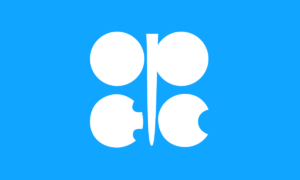
OPEC
implemented a 9.7 million b/d production cut accord. The cut tapers to 7.7 million b/d from August to December, and then down to 5.8 million b/d from 2021 through April 2022.
With its need for constant monitoring of oil market developments, the coalition’s Joint Ministerial Monitoring Committee, and Joint Technical Committee continue to meet monthly “to strengthen monitoring and keep abreast of the very dynamic market fundamentals,” he said.
“We carefully monitor developments in the Asian market, including Asian oil consumers’ procurement strategies. This feeds into the analysis that informs our decision-making process,” he added.
When asked about the outlook for Asia’s oil demand recovery to pre-pandemic levels, Barkindo said: “Based on current assumptions, a full recovery to pre-crisis levels will not appear in Other Asia during 2021.” He added that the demand recovery is highly dependent on measures aimed at containing the coronavirus pandemic and the development of a successful vaccine.
“China, on the other hand, will recover completely in 2021, should current assumptions continue to hold,” he added.
Asked whether Asia has the bandwidth to take extra barrels in the coming months, he said: “This depends on crude storage and product demand. Asia will take up extra barrels as long as there is available storage capacity, including floating storage, which also closely depends on the price structure in the market.”
“Consumers will try to take up as much as they can. However, ultimately, once storage constraints are met, then it will be up to the rate of product consumption to dictate whether Asia can take up more barrels or not,” he said.
Barkindo, however, added that the current signs and indications in the market highlight the pressure from huge uncertainties and associated risks.
“We are closely monitoring the pace of the gradual recovery in product consumption. Alternatively, if more refineries are forced to close, due to strong competition, Asian refiners would be in a better position to capture a larger market share, which would provide room for more crude imports.”
OPEC, which marked its 60th anniversary on Monday, sees no change in its cooperation and dialogues with other oil producers as well as oil consumers, including in Asia.
“Dialogue is a crucial cornerstone of our strategy. This has been the case since the organization’s inception but has been particularly important given current circumstances.
“Throughout the global lockdowns, we have held a series of bilateral video conferences with our Asian partners. All of these dialogues represent opportunities to engage with Asian consumers, listen to their views and incorporate them within our strategy,” Barkindo added.
TBI Africa




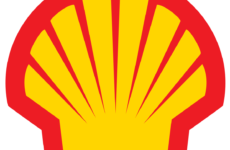








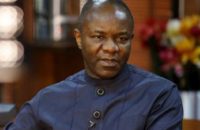
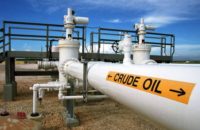

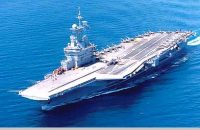
Comments